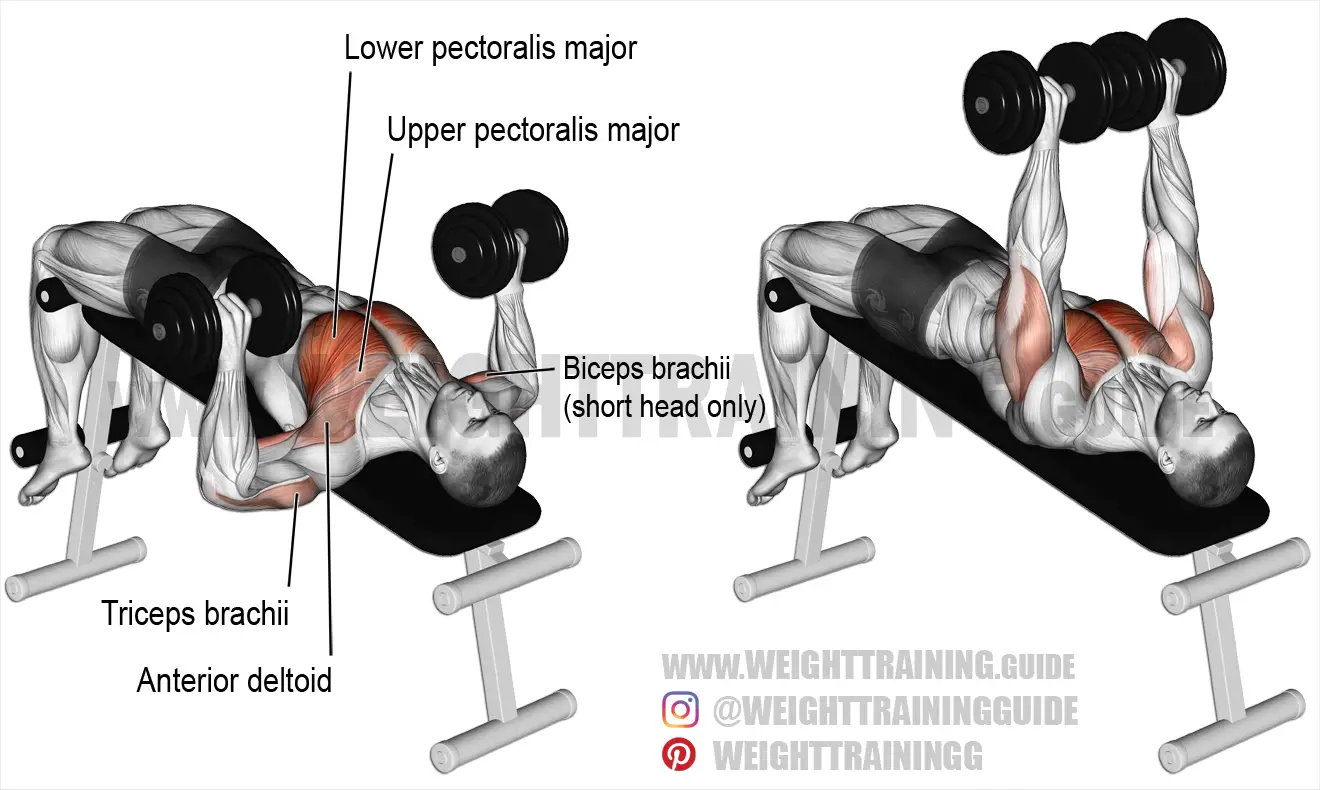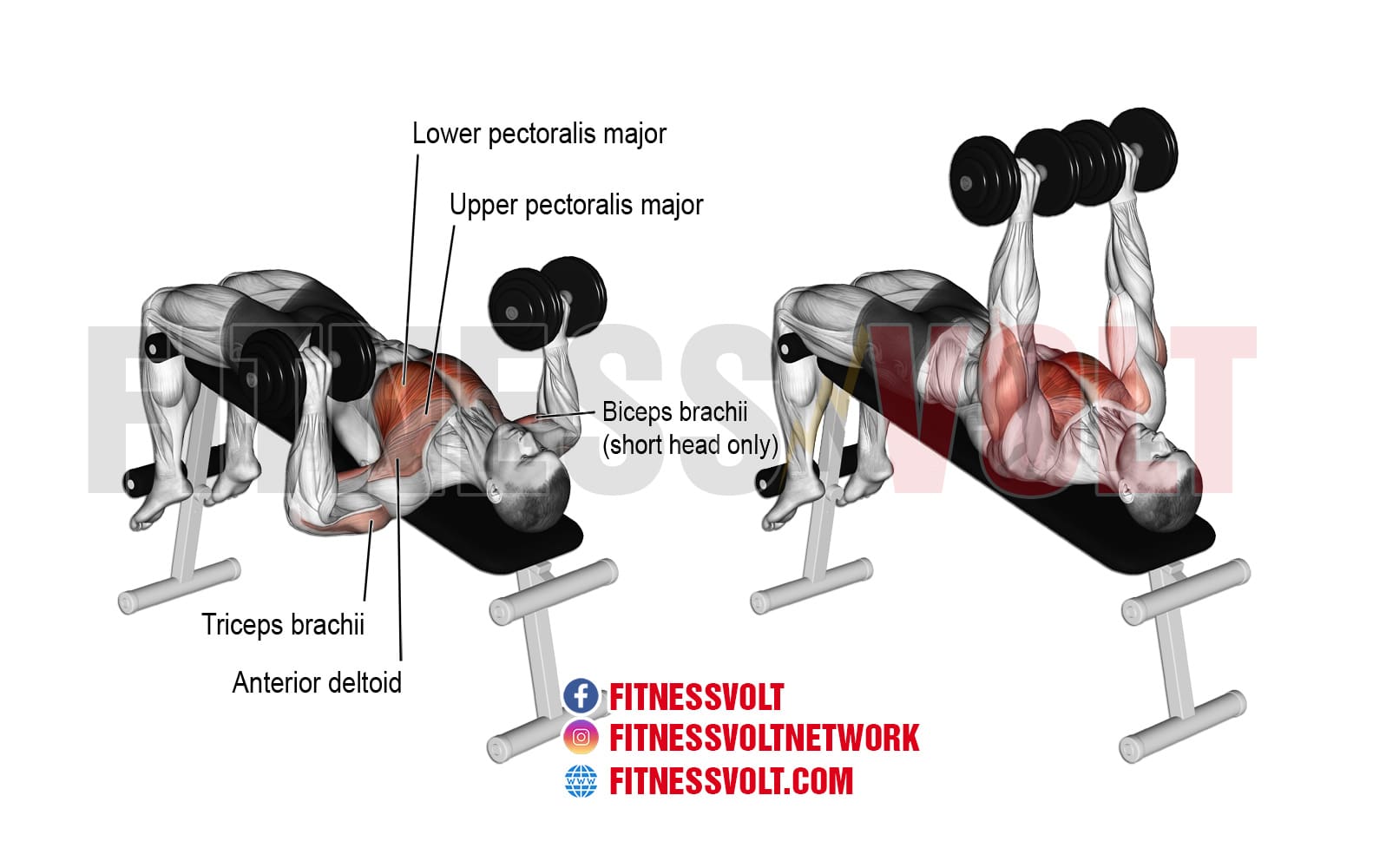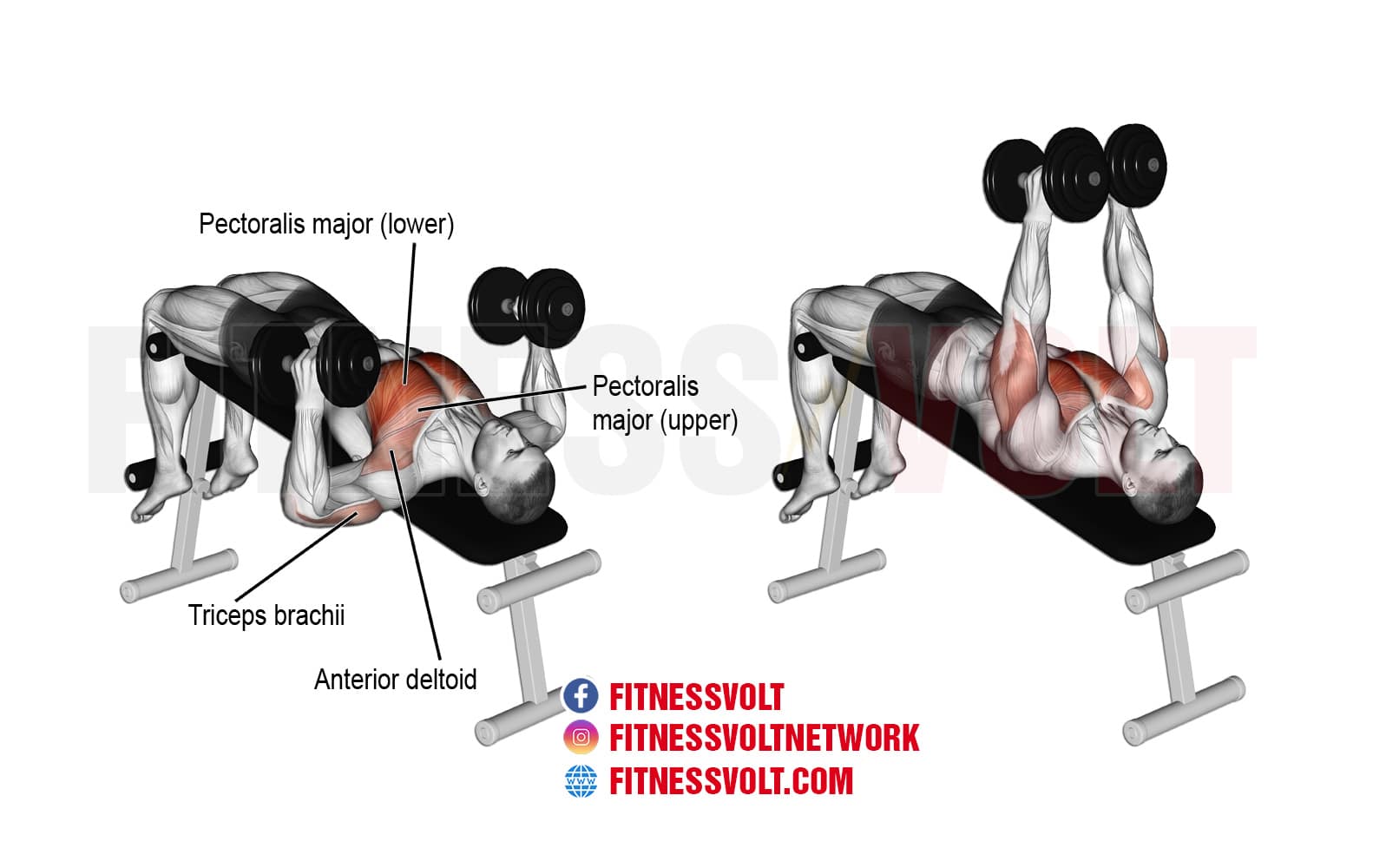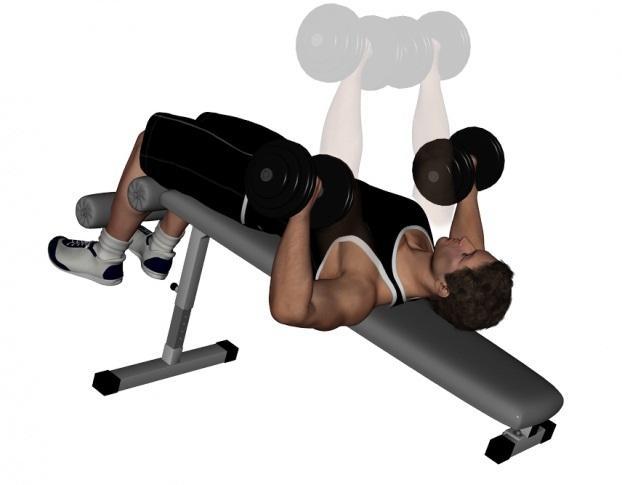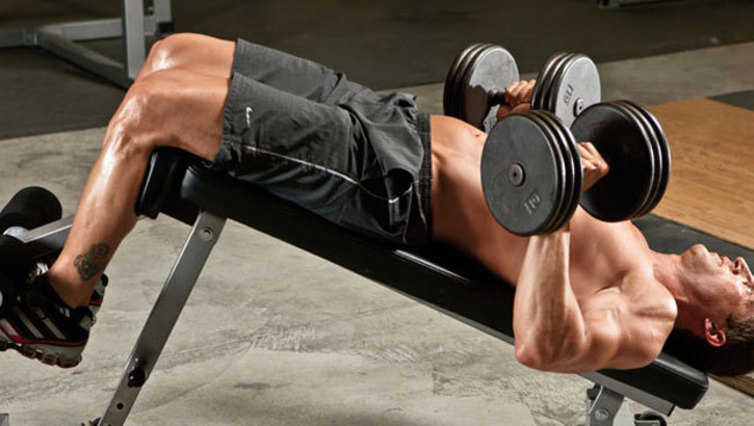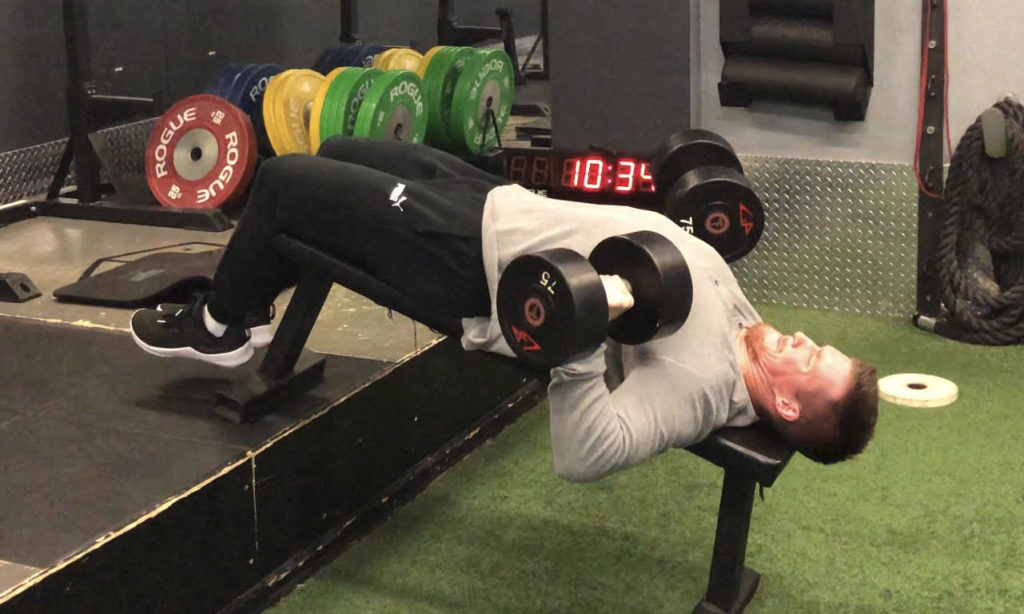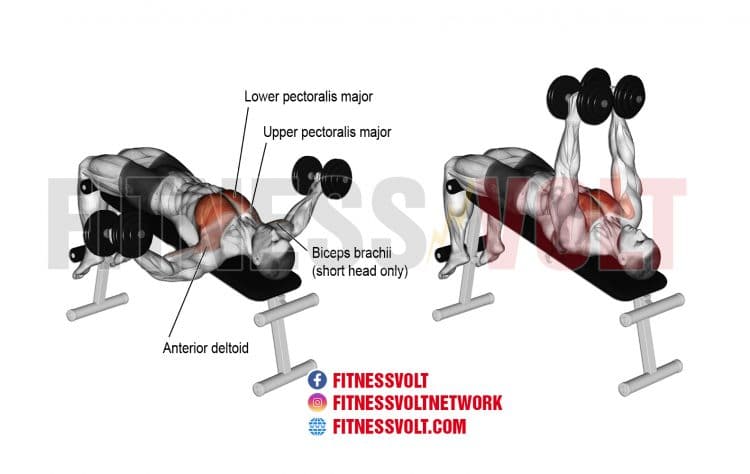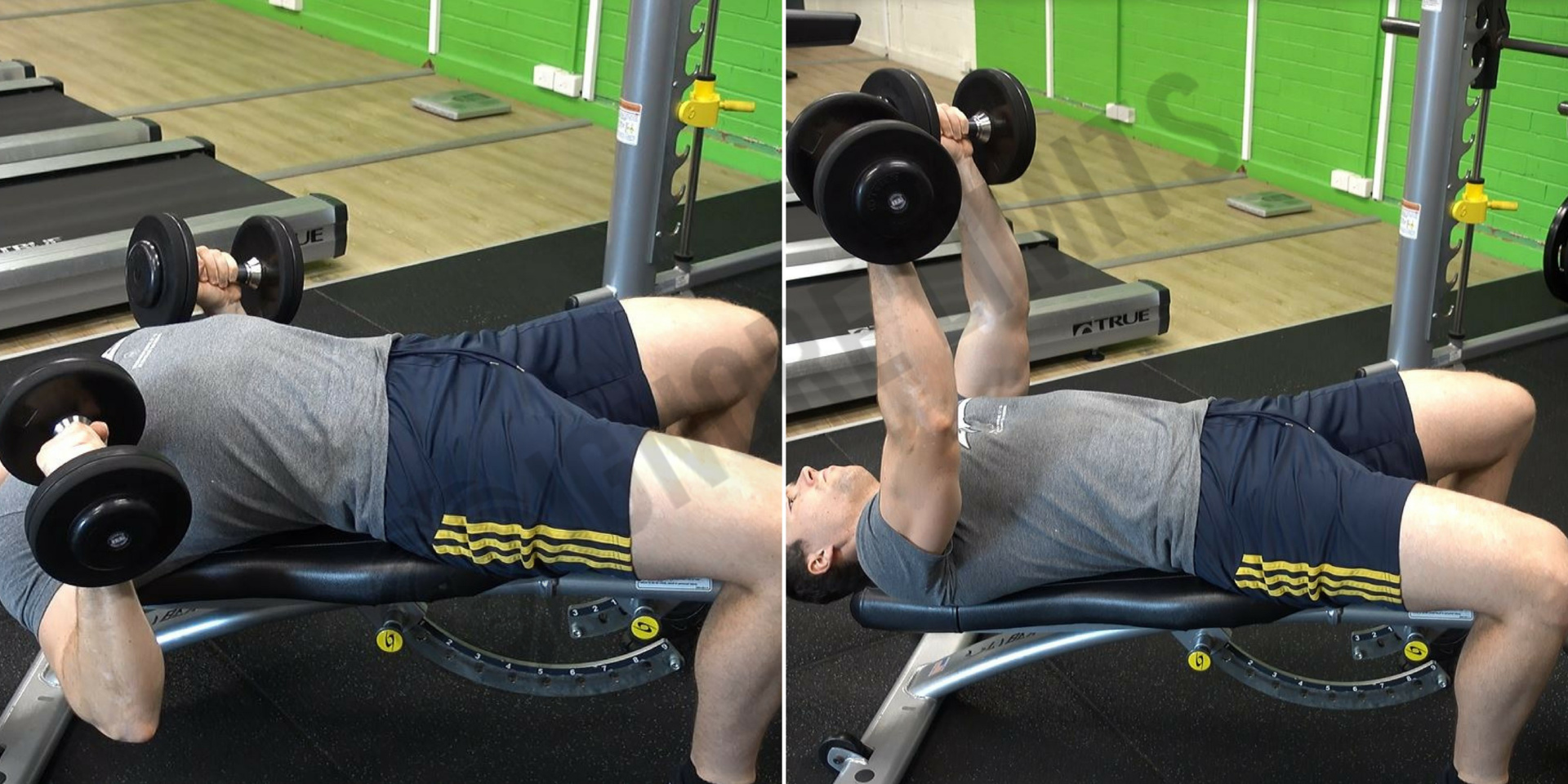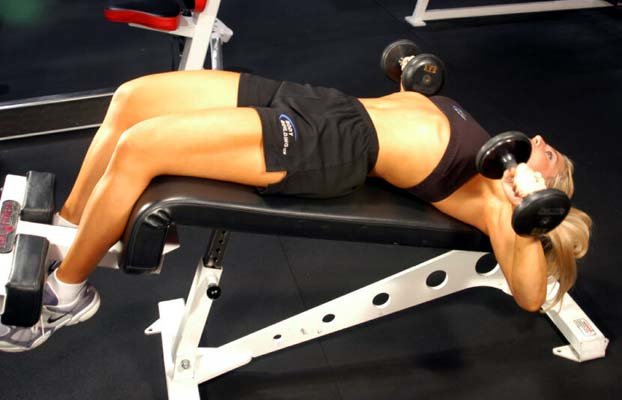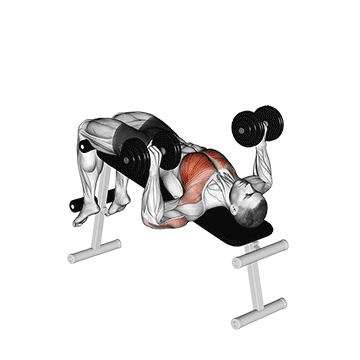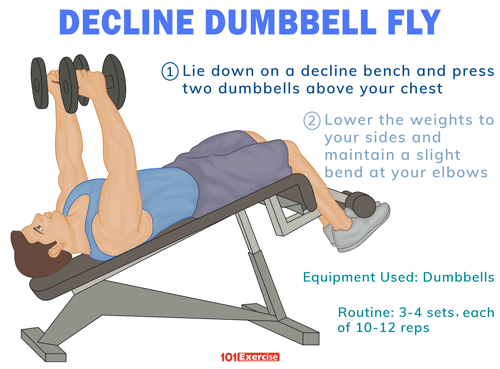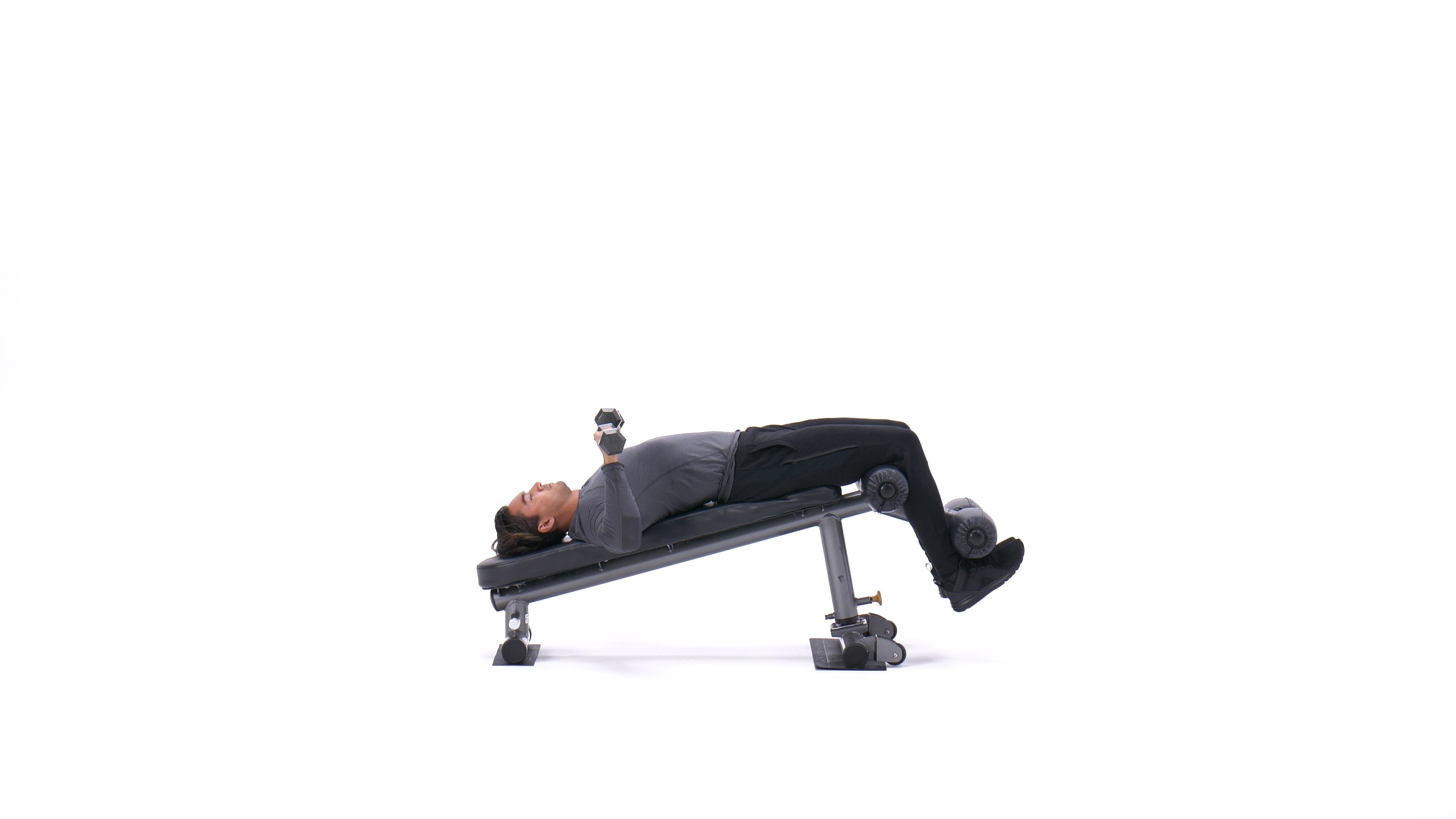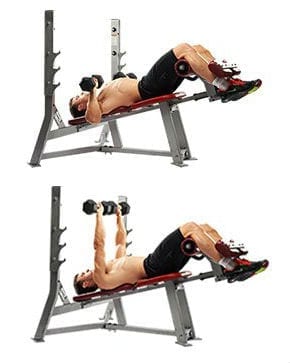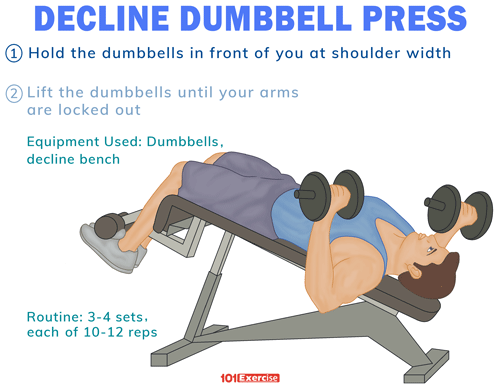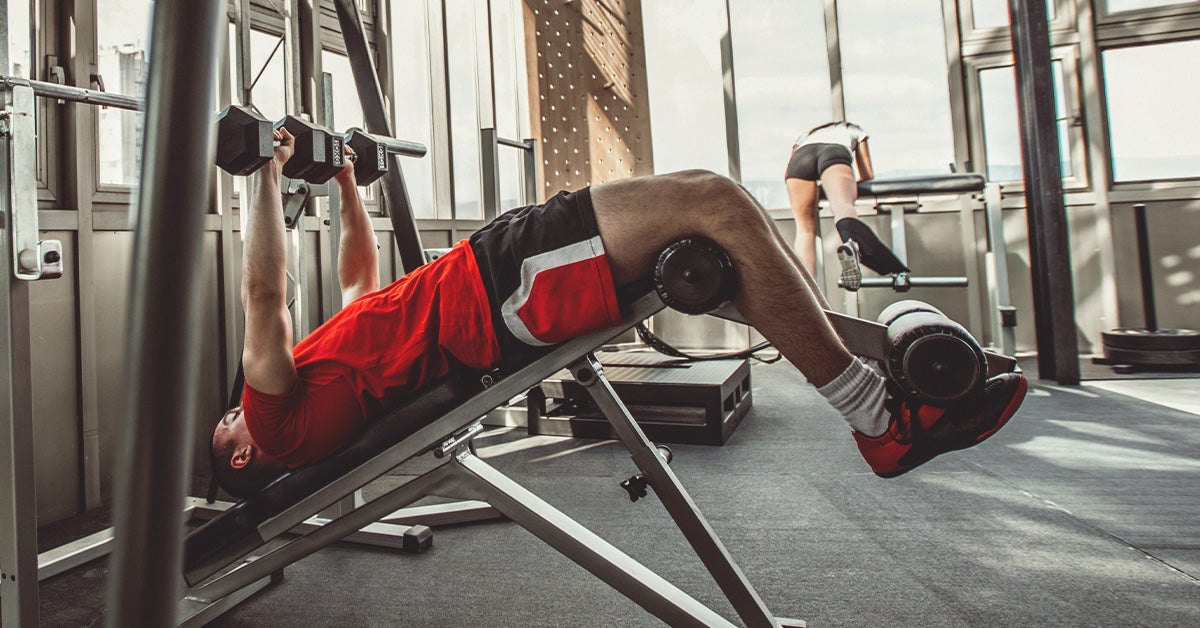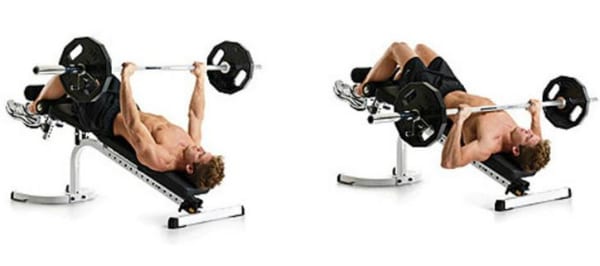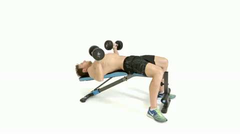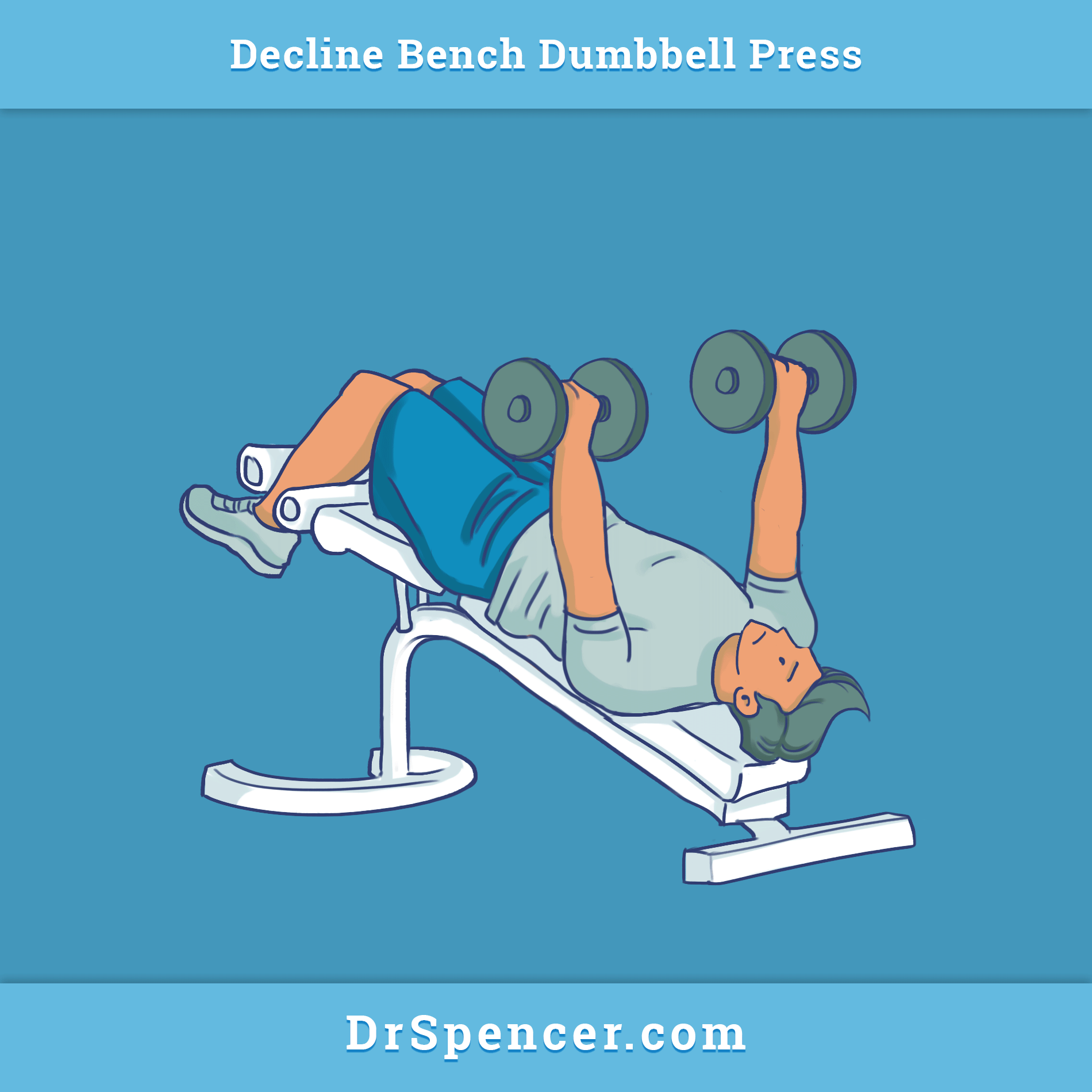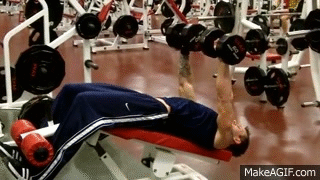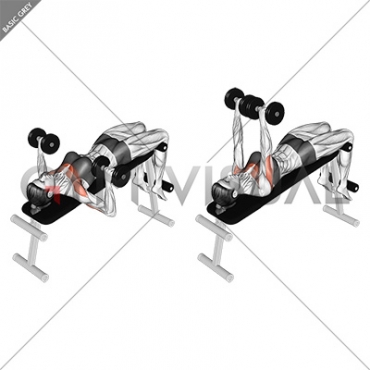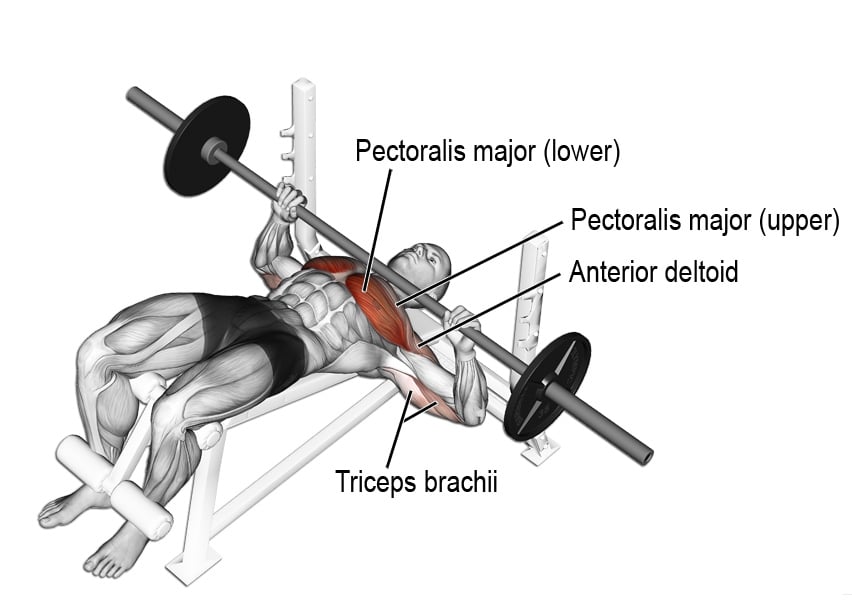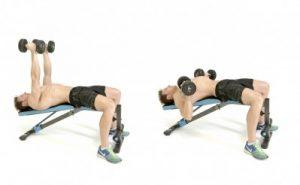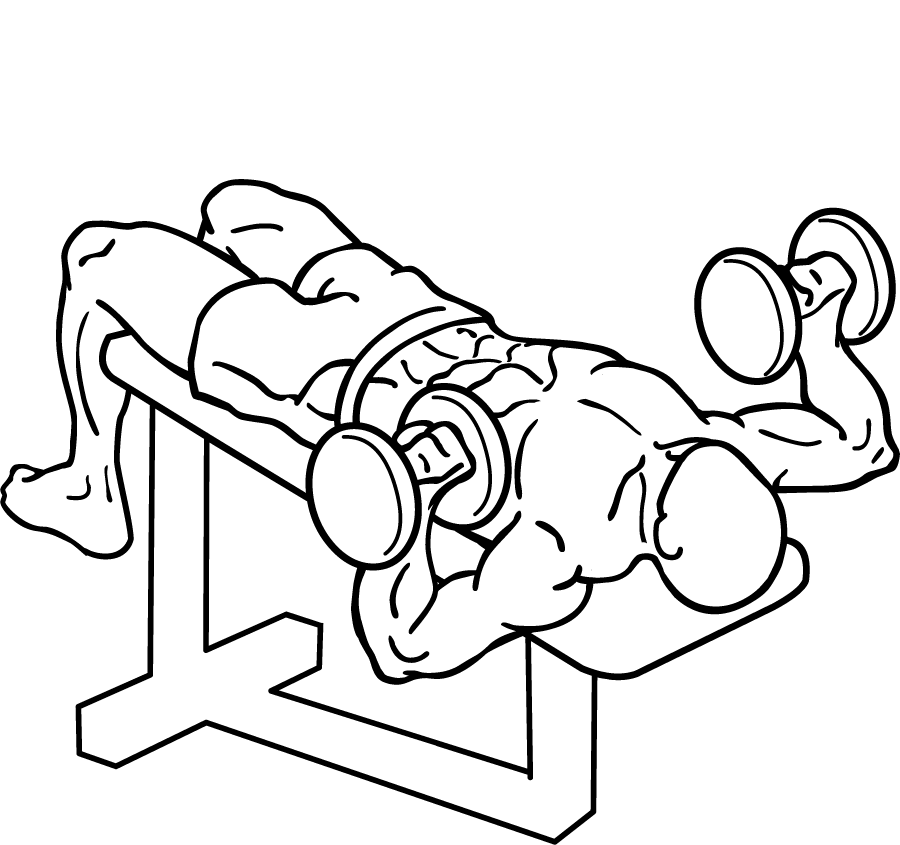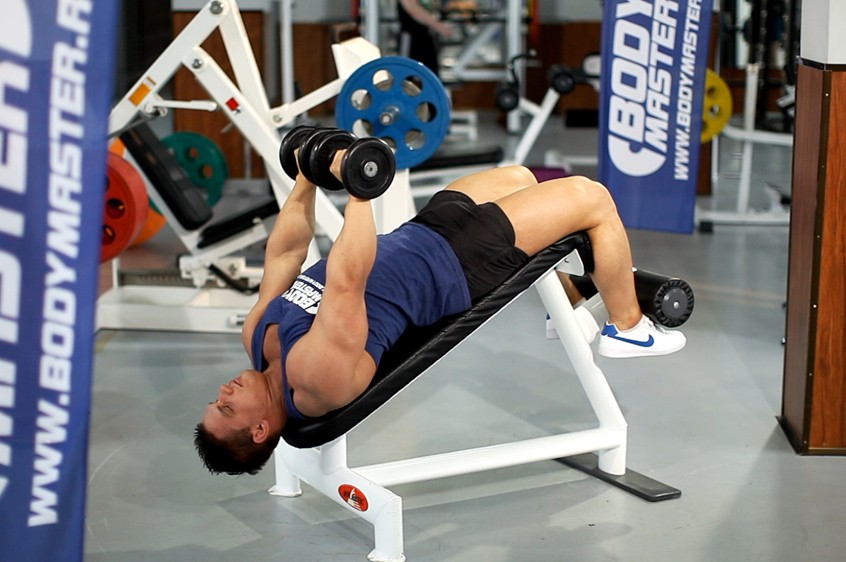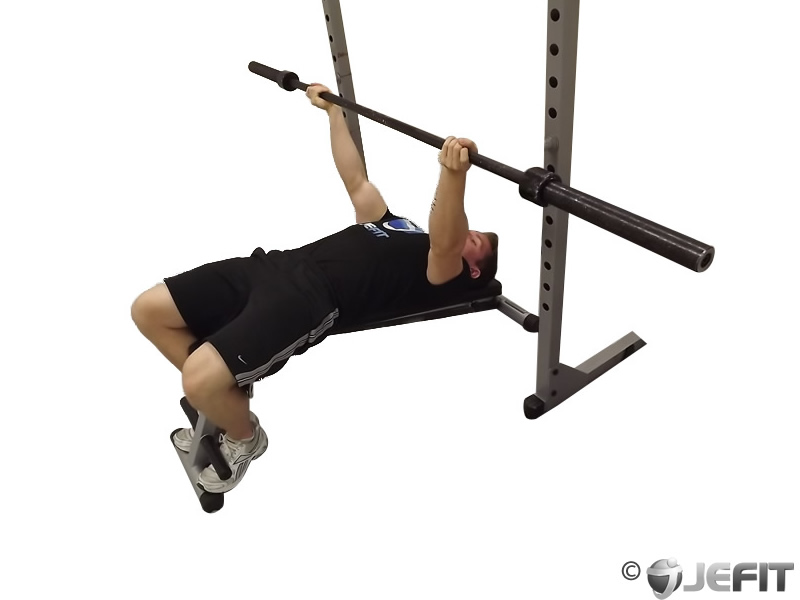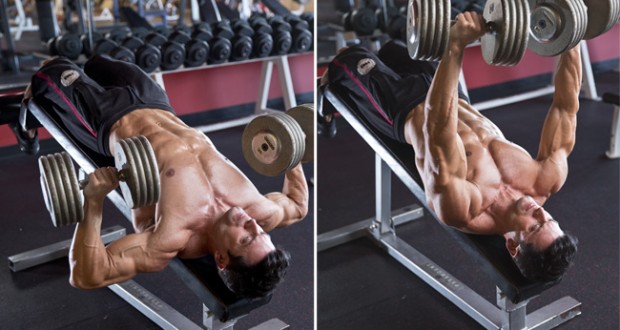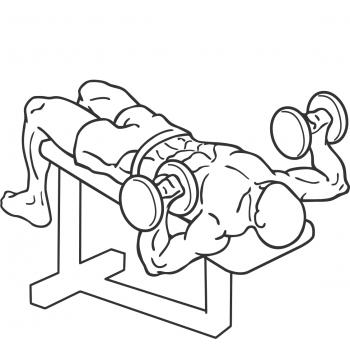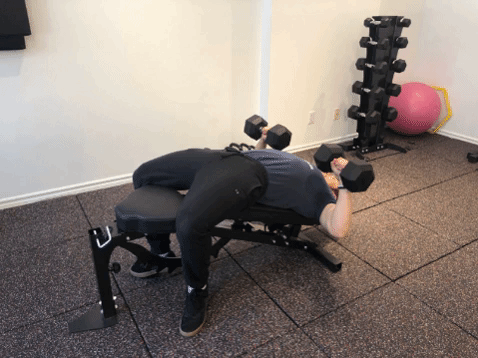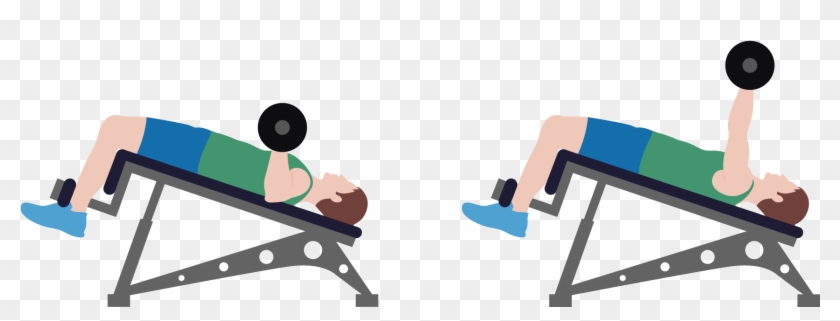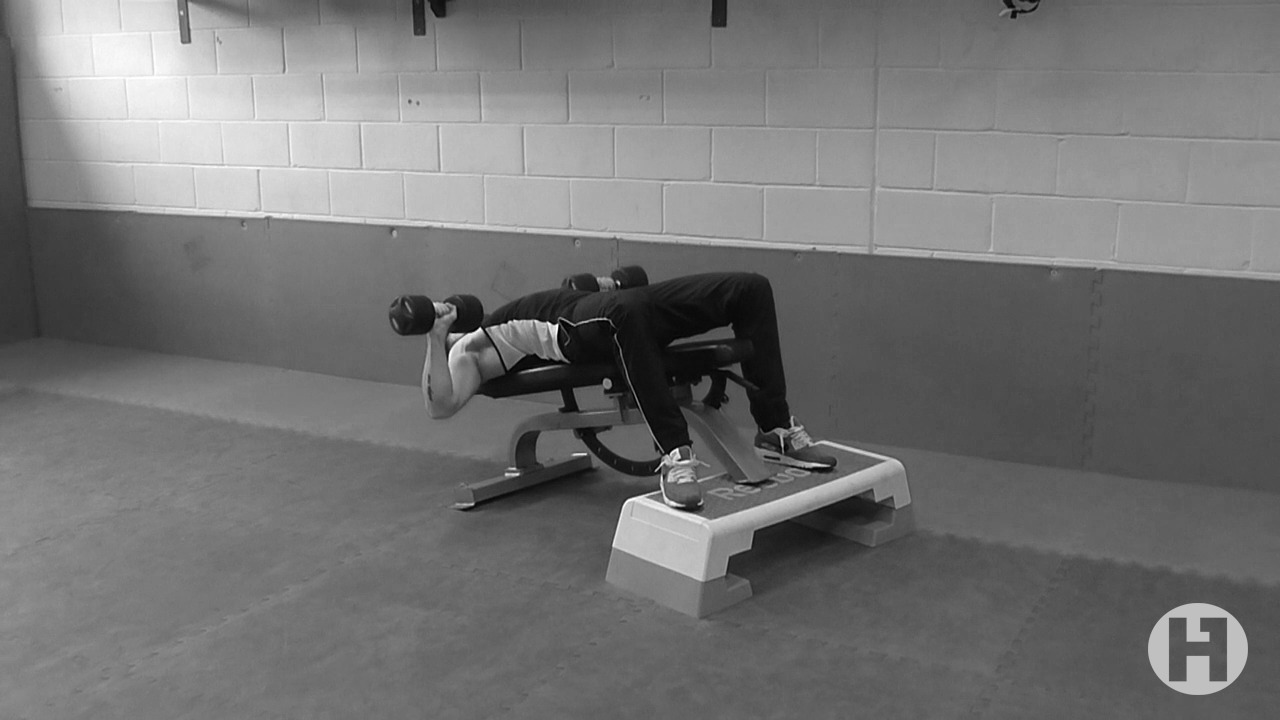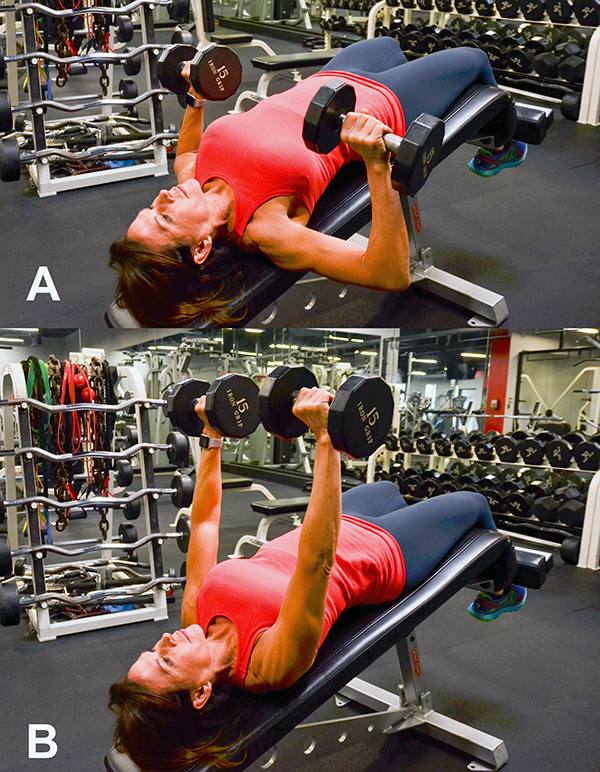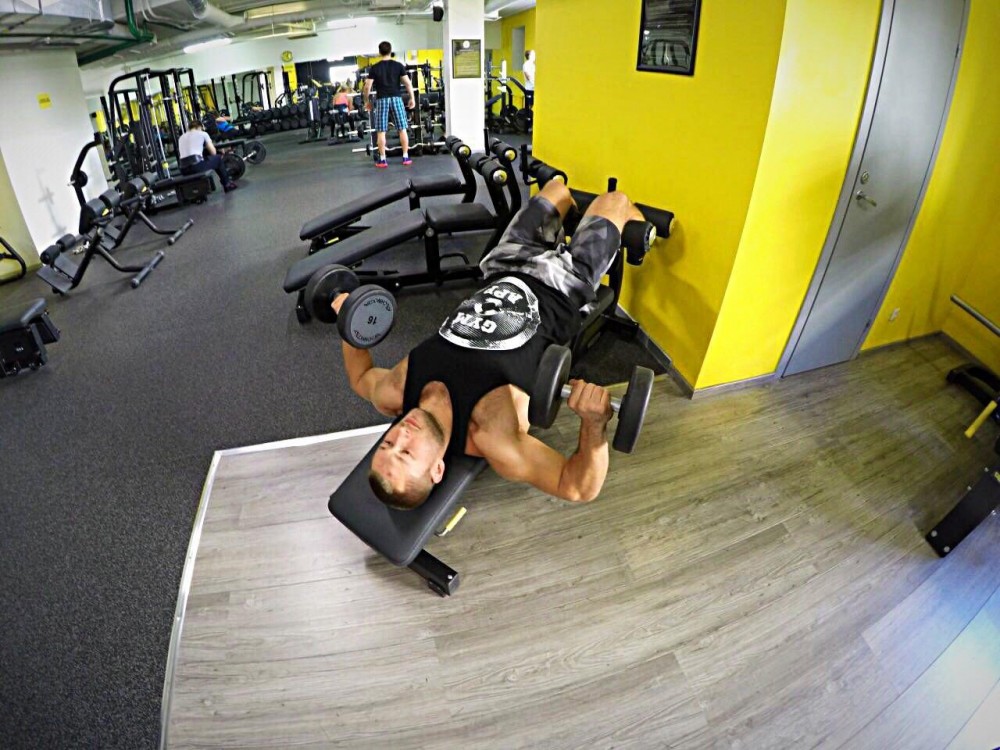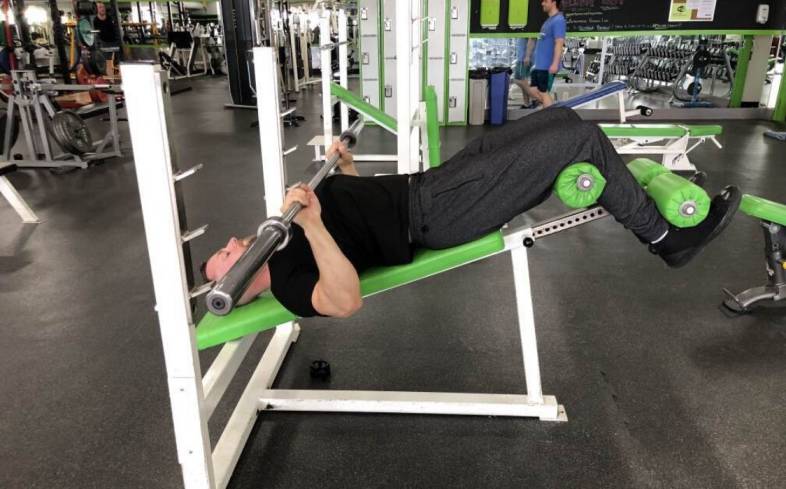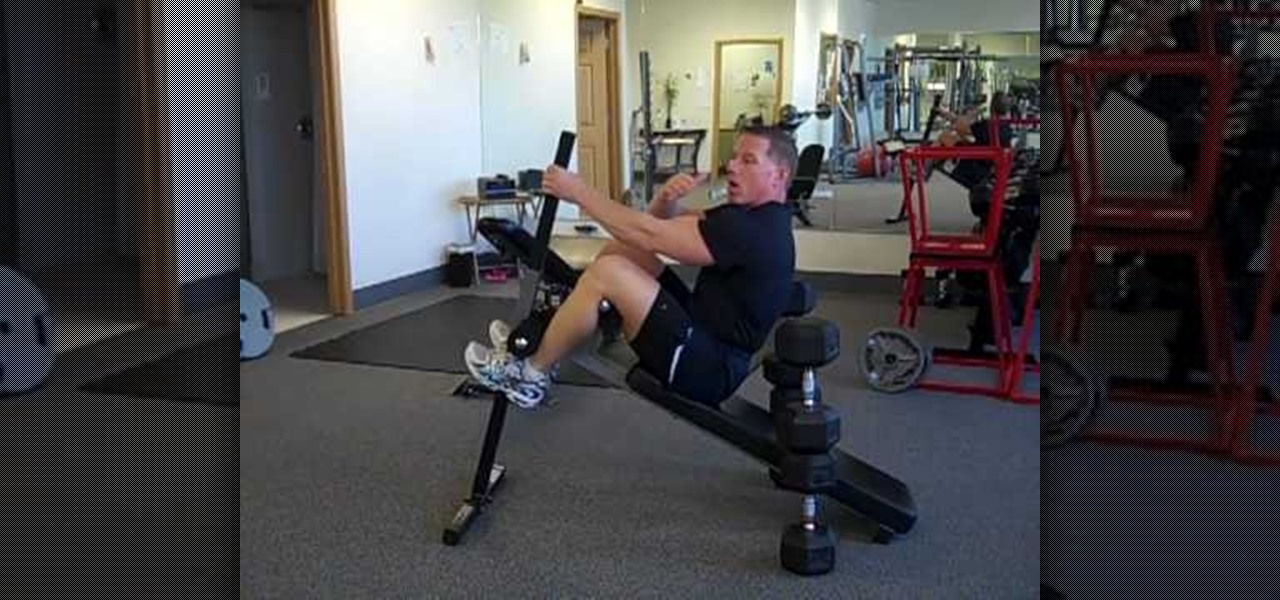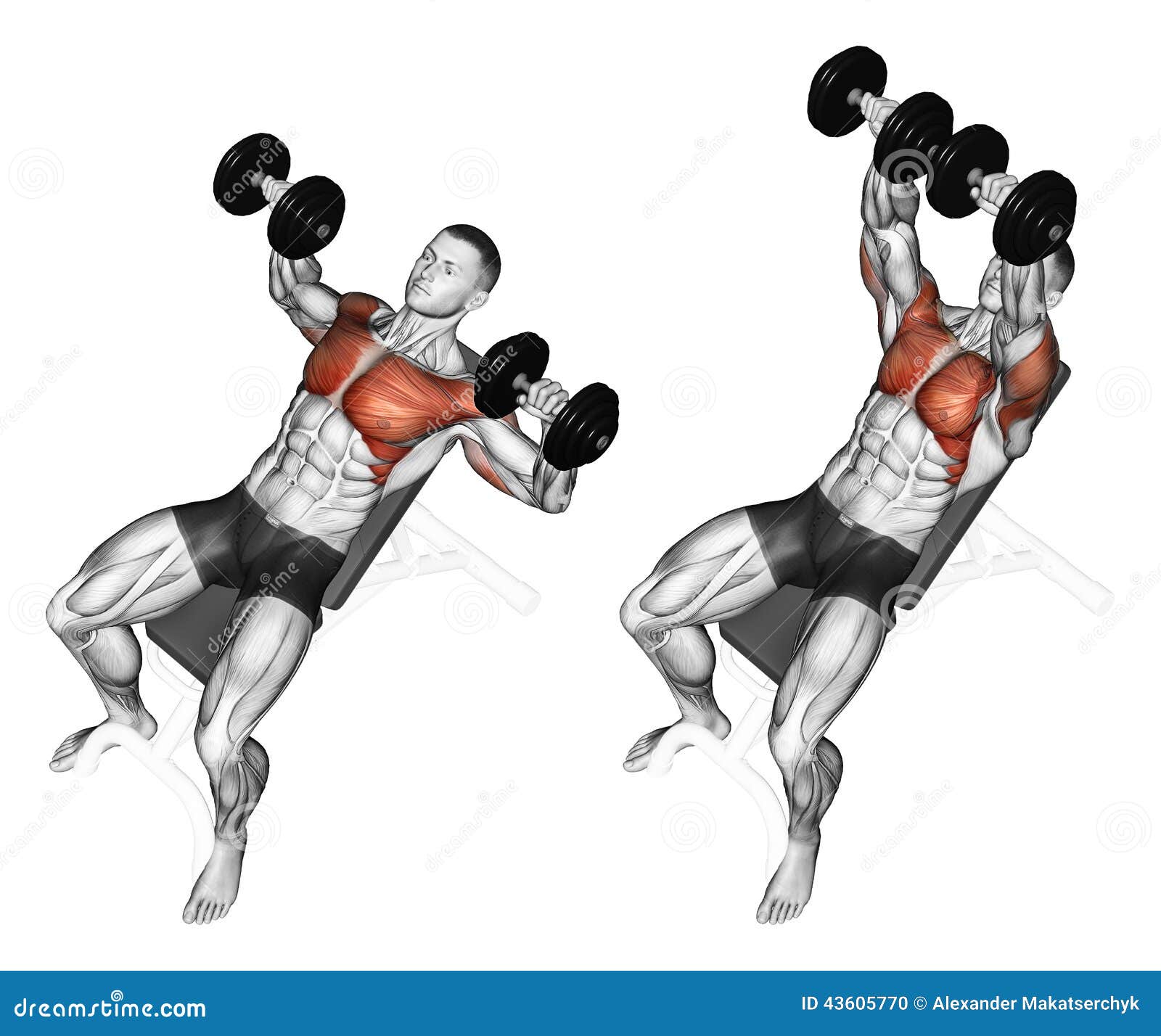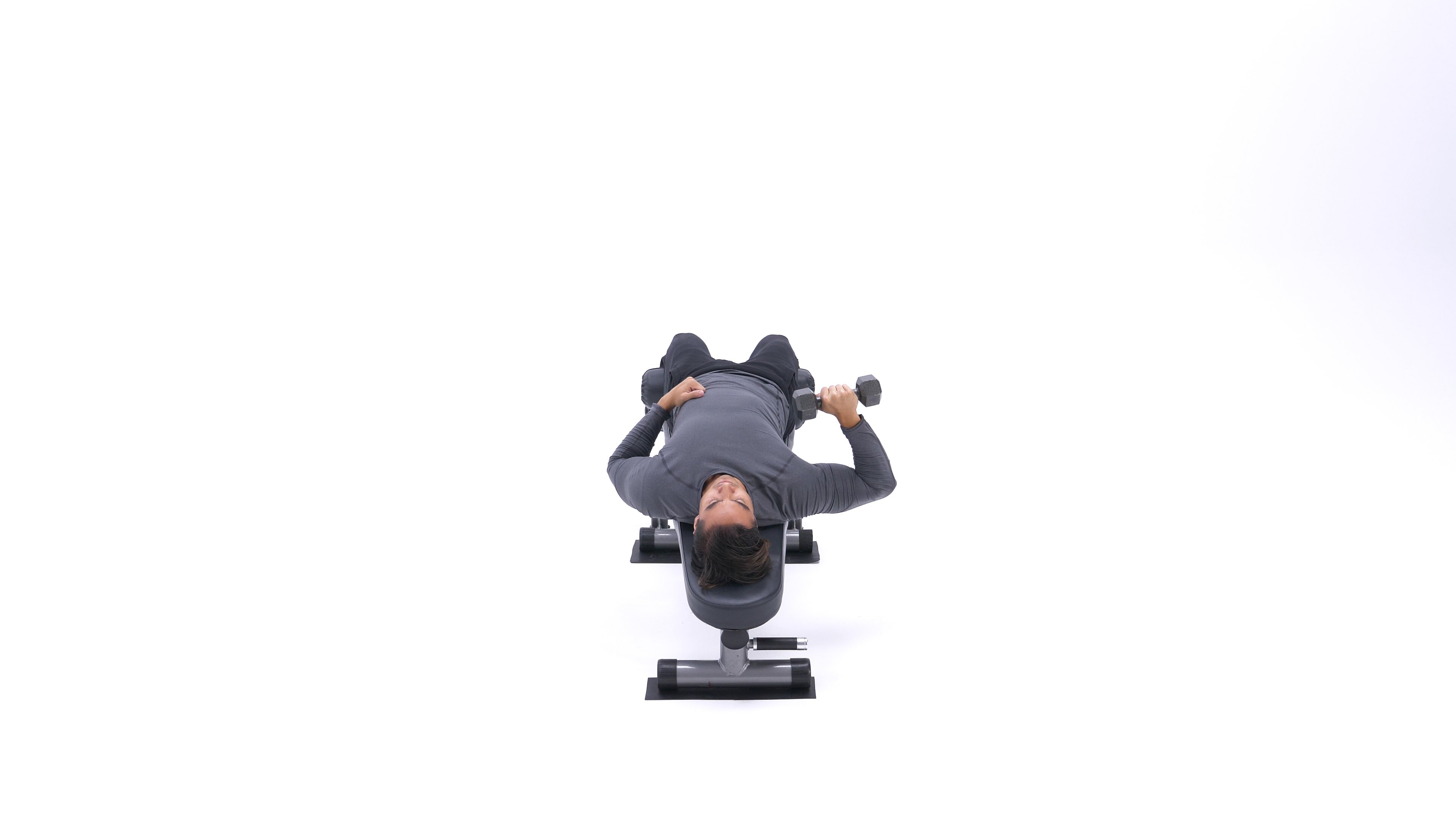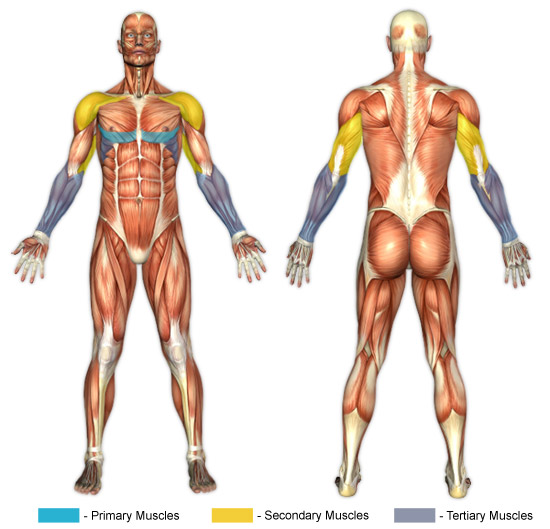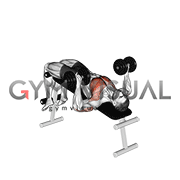Decline Dumbbell Bench Press

Decline dumbbell bench press tips tricks make sure that your legs are steady at the top of the bench you don t want to slide down the bench.
Decline dumbbell bench press. Forcefully press the dumbbells up in an arc coming. Using dumbbells also requires a great deal of shoulder stability thus it recruits more muscle fibers to stabilize the body than its barbell counterpart. Once you are laying.
The decline dumbbell bench press is a variation of the decline bench press. The palms of your hand will be facing each other. Decline bench press benefits there s a gym myth that doing the decline bench press actually flattens your chest.
Lie back on the bench kicking the dumbbells back with you or have a spotter hand the weights. The decline bench press is one of the best exercises for the lower pecs but you might want to switch up your chest day here and there. The decline dumbbell bench press is an excellent exercise to add mass and build strength in both the chest and triceps.
With your back stabilized on the bench lift the dumbbells and hold them close. When pressing a barbell the barbell is always above your chest there s only so low that the barbell can be lowered. Push secure your legs at the end of the decline bench and lie down with a dumbbell on each hand on top of your thighs.
Place your feet firmly under the leg brace and lie back on a decline bench while holding a dumbbell in each hand. Set a weight bench at a 30 percent decline. The decline dumbbell bench press is a popular upper body exercise targeting the lower pectoral muscles.
In a decline bench press the bench is set to 15 to 30 degrees on a decline. If possible use a decline bench. This angle places your upper body on a downward slope which activates the lower pectoral muscles as you push weights.
In actuality the decline bench may be more beneficial than the standard bench press. Use light weight in the beginning raising and lowering the dumbbells directly over your lower chest. While it can be a strength focused movement it is usually performed for moderate to high reps such as 8 12 reps per set or more as part of upper body or chest focused training.
What are the benefits of a decline dumbbell press. Dumbbells on the other hand can be moved around the body resulting in a far deeper range of motion and a better stretch and contraction in the chest.
